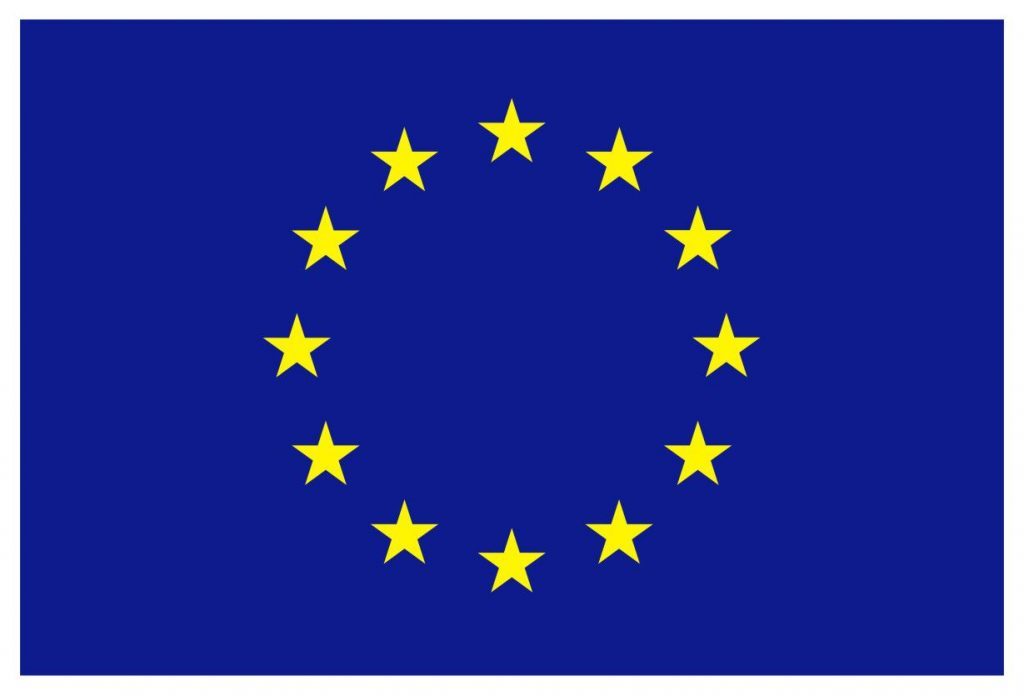European directives
The aim of the EU Directives is to harmonize the national legislation of the Member States so as to have common regulations concerning technical, economic, social aspects, etc. and to facilitate the free circulation of goods, services and people within the European Union.
A Directive is a legislative act that establishes the objectives that all EU countries must achieve. For this reason it is mandatory to transpose it without modification to national legislation; however, each country can decide how to transpose. In particular, with regard to safety at workplace, the legislation distinguishes between two types of measures:
- Social directive
- Product directive

Social directives
Social directives are addressed to the employer and have as their goal the improvement of safety in the workplace environment. Are examples of social directive: the General Directive 89/391 / EEC, concerning the implementation of measures aimed at the improvement of safety and health of workers and the particular Directive related to it,
2009/104 / EC, on the use of work equipment. Other social directives of interest are:
- 2019/1832/UE “Personal protective equipment”
- 90/269 CEE “Manual handling of loads”
- 90/270 CEE “VDT equipment”
Product directive
Product Directives establish:
- The Essential Safety Requirements of products in order to guarantee the free movement of safe products within the European market
- Attestation conformity criteria
The fundamental directives for safety work equipment are:
- 2006/42/EC “Machinery directive”
- 2014/35/EU “Low Voltage Directive”
- 2014/34/EU “Electromagnetic Compatibility Directive”
- 2014/34/EU “ATEX directive”
Compliance with technical safety requirements of the directives is mandatory.
Machinery directive
The “Machinery Directive” 2006/42/EC is meant for the manufacturers of machines and safety components, and has the following goals:
- The definition of safety and health protection requirements for the improvement of the degree of protection offered to the operators of hazardous machinery
- The design, manufacture and marketing in the European Union of machines and components complying with the minimum safety requirements laid down by the Directive itself
- The free circulation in the Member States of machines and safety components complying with the Directive
The Machinery Directive:
- Applies to all new machines and safety components that are sold, lent or hired, and to used machinery in case they are sold, rent or lent.
- It sets forth the essential safety requirements relating to the design and manufacturing of machines and safety components and it defines the respective certification procedures.
- It is mandatory for machines and for safety components.
- Only products conforming to the Directive can be marketed or commissioned in the European Union
Certification procedures
The machinery directive:
- Lays down stringent procedures for safety components and highly hazardous machines which are listed in Annex IV
- Lays down simplified procedures for low and medium risk machines not included in Annex IV
- Requires machine builders to draw up a technical file stating the safety principles adopted in the design, manufacture, transport, use and maintenance of the machine or of the safety component
Declaration of conformity
In order to certify the conformity of a product to the Directive, the manufacturer must:
- Affix the CE mark to the product
- Attach the CE declaration of conformity attesting compliance to the Directive
Certifications
The CE type certificates is valid for 5 years (Annex IX para. 9.3), the five-year period starting from the date of issue of the certificate. After which a new verification will be required to maintain the certification.
Low voltage directive
2014/35/EU is aimed at ensuring that electrical materials are designed and manufactured so as to guarantee the protection of people against any risks of electrocution resulting from their use or from the influence of external agents on the electrical materials themselves.
This Directive applies to all electrical materials meant for use at a nominal voltage between:
- 50V and 1000V for alternating current
- 75V and 1500V for direct current
Electromagnetic compatibility directive
The aim of “Electromagnetic Compatibility Directive” 2014/30/EU is to ensure that electrical devices are designed and manufactured so that:
- Electromagnetic emissions are limited and low enough to permit other electrical devices to operate according to their intended use
- The level of built-in immunity to external electromagnetic disturbances enables them to operate according to their intended use
This Directive applies to all electrical and electronic devices able to cause electromagnetic disturbances and whose operation can be affected by external electrical factors.
ATEX directive
The ATEX Directive 2014/34/EU applies to all equipment intended for use in potentially explosive atmosphere. It is in force since 30 March 2014.
The ATEX Directive 2014/34/EU specifies minimum safety requirements for electrical devices used in environments classified as dangerous regarding the aspect of risk of explosion due to the presence of gas or dust.
The Directive allocates equipment into group and categories.
The manufacturer must decide, according to the use, the Group and the Category to which the equipment belongs.
- Group 1: equipment intended for use in underground works, mines and their above ground installations
- Group 2: equipment intended for use in environments where explosive atmospheres are likely to occur
- These product groups are than categorized according to the level of protection against the risk of ignition of potentially explosive atmospheres.
The products in the Group 2 are divided into three Categories:
- Category 1: equipment intended for high-risk zones where an explosive atmosphere is present for long periods
- Category 2: equipment intended for medium-risk zones where an explosive atmosphere may occur under normal
operating conditions - Category 3: equipment intended for zones where an explosive atmosphere is only likely under abnormal circumstances
The data on the Mosaic RV module label regarding ATEX certification are as follows:
II 3G Ex ec IIC T5 Gc with -40°C ≤ Tamb ≤ +50°C
II 3G Ex ec IIC T4 Gc with -40°C ≤ Tamb ≤ +65°C
Reading key
II | 3G | Ex ec | IIC | T5 | Gc | -40°C ≤ Tamb ≤ +50°C | |
1 | 2 | 3 | 4 | 5 | 6 | 7 | 8 |
1 – EX Mark:
Approved for use in potentially explosive atmospheres
2 – Equipment group:
II = outdoor use
I | Use in mines |
II | outdoor use |
3 – Equipment category:
3G = Gas, normal safety level
G = GAS | |
1G | Very high safety level |
2G | High safety level |
3G | Normal safety level |
4 – Protection method:
Ex ec = enhanced safety (ref EN 60079-7)
Ex db | Explosion-proof | EN 60079-1 |
Ex eb | Enhanced safety | EN 60079-7 |
Ex ia | Intrinsic safety | EN 60079-11 |
Ex ma | Encapsulated | EN 60079-18 |
Ex nC | Sealed devices Restricted breathing | EN 60079-15 |
Ex ob | Dipping in Oil | EN 60079-6 |
Ex op pr | Optical radiation | EN 60079-28 |
Ex pxb | Pressurisation | EN 60079-2 |
Ex qb | Sand Fill | EN 60079-5 |
Ex h | Mechanical | EN 80079-36 |
5 – Gas or Dust Group:
IIC = Very Hazardous Gas
II = GAS Group | ||
IIA | Less Hazardous | acetone, ethyl alcohol, ammonia, gasoline |
IIB | Medium Hazardous | acetaldehyde, cyclopropane, ethyl ether, ethylene |
IIC | Very Hazardous | acetylene, hydrogen, carbon disulphide |
6 – Temperature classes:
T4: Maximum surface temperature 135°C
T5: Maximum surface temperature 100°C
T1 | 450 °C |
T2 | 300 °C |
T3 | 200 °C |
T4 | 135 °C |
T5 | 100 °C |
T6 | 85 °C |
7 – Equipment Protection Level (EPL):
Gc = Gas, zone 2
G = GAS | ||
a | Up to zone 0 | Area in which an explosive atmosphere is present permanently or for long periods or frequently |
b | Up to zone 1 | Area where the formation of an explosive atmosphere is likely to occur occasionally during normal activities |
c | Up to zone 2 | Area in which an explosive atmosphere is not likely to occur in normal operation or, if it does occur, is only of short duration |
8 – Operating range of the device
T4: between -40 °C and +65 °C
T5: between -40 °C and +50 °C
The data on the Safety Light Curtains label regarding ATEX certification are as follows:
Gas: II 3G Ex nA IIC T6 Gc
Dust: II 3D Ex tc IIIC T60°C Dc
Reading key
II | 3G | Ex nA | IIC | T6 | Gc | |
1 | 2 | 3 | 4 | 5 | 6 | 7 |
1 – EX Mark:
Approved for use in potentially explosive atmospheres
2 – Equipment group:
II = outdoor use
I | Use in mines |
II | Outdoor use |
3 – Equipment category:
3G = Gas, normal safety level
3D = Dust, normal safety level
G = GAS | |
1G | Very high safety level |
2G | High safety level |
3G | Normal safety level |
D = DUST | |
1D | Very high safety level |
2D | High safety level |
3D | Normal safety level |
4 – Protection method:
Ex nA = non-sparking equipment
Ex tc = dust-tight
GAS | ||
Ex db | Explosion-proof | EN 60079-1 |
Ex eb | Enhanced safety | EN 60079-7 |
Ex ia | Intrinsic safety | EN 60079-11 |
Ex ma | Encapsulated | EN 60079-18 |
Ex nA | Non-sparking Sealed devices Limited energy Limited breathing | EN 60079-15 |
Ex ob | Dipping in Oil | EN 60079-6 |
Ex op pr | Optical radiation | EN 60079-28 |
Ex pxb | Pressurisation | EN 60079-2 |
Ex qb | Sand Fill | EN 60079-5 |
Ex h | Mechanical | EN 80079-36 |
DUST | ||
Ex ma | Encapsulated | EN 60079-18 |
Ex op pr | Optical radiation | EN 60079-28 |
Ex pxb | Pressurisation | EN 60079-2 |
Ex ta | Dust-tight | EN 60079-31 |
Ex ia | Intrinsic safety | EN 60079-11 |
Ex h | Mechanical | EN 80079-36 |
5 – Gas or Dust Group:
IIC = Very Hazardous Gas
IIIC = Conductive dust
II = GAS Group | ||
IIA | Less Hazardous | acetone, ethyl alcohol, ammonia, gasoline |
IIB | Medium Hazardous | acetaldehyde, cyclopropane, ethyl ether, ethylene |
IIC | Very Hazardous | acetylene, hydrogen, carbon disulphide |
III = DUST Group | ||
IIIA | Combustible fibres | Nominal size greater than 500 mm |
IIIB | Non-conductive dust | Nominal size less than or equal to 500 mm and electrical resistivity greater than 103 Wm |
IIIC | Conductive dust | Nominal size less than or equal to 500 mm and electrical resistivity less than or equal to 103 Wm |
6 – Temperature classes:
T6: Maximum surface temperature 85°C
T60°C: Maximum surface temperature 60°C
GAS | |
T1 | 450 °C |
T2 | 300 °C |
T3 | 200 °C |
T4 | 135 °C |
T5 | 100 °C |
T6 | 85 °C |
DUST | |
T … °C | … °C |
7 – Equipment Protection Level (EPL):
Gc = Gas, zone 2
DC = Dust, zone 22
G = GAS | D = DUST | ||
a | Up to zone 0 (gas) or 20 (dust) | Area in which an explosive atmosphere is present permanently or for long periods or frequently |
b | Up to zone 1 (gas) or 21 (dust) | Area where the formation of an explosive atmosphere is likely to occur occasionally during normal activities |
c | Up to zone 2 (gas) or 22 (dust) | Area in which an explosive atmosphere is not likely to occur in normal operation or, if it does occur, is only of short duration |
In each Member State, the role of the accredited Bodies is to assess and verify the compliance and the application of the European Directives.
Each State is responsible for the appointment and control of its own Bodies.
Notified Bodies are authorized to examine and certify machines and safety components in compliance with the applicable Directives.
Each Member State of the European Union is required to:
- Appoint the Notified Bodies by specifying their tasks
- Submit a list of the Notified Bodies to the European Commission and to the other Member States
The European Commission publishes a Directory of all the Notified Bodies on the Official Journal of the European Commission, together with a list of the services, the machines and/or the safety components on which they are authorised to intervene.
The Member States of the European Union must make sure that these Bodies respect specified ethical and technical criteria.
Compliance with technical safety requirements of the directives is mandatory.



